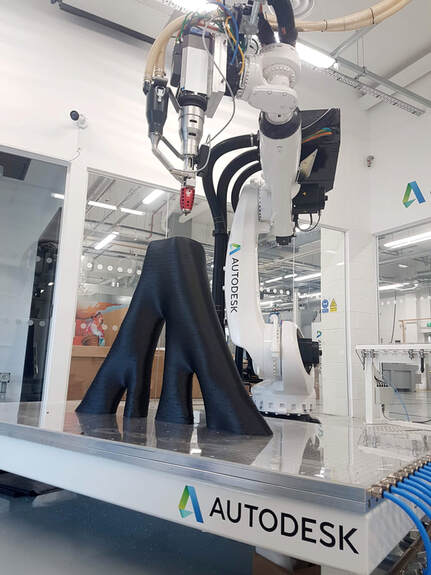Hybrid Manufacturing Technologies (HMT), a specialist in hybrid subtractive-additive systems, has developed a new method of thermoplastic production it calls ‘AXIOM’ – automated extrusion into an open mold. The novel process, which combines 3D printing and the benefits of injection molding, reportedly produces high-strength parts at high speeds with the flexibility of AM.
The AXIOM method
Injection molding has always been superior when it comes to speed and part quality, especially for mass production. When comparing AM and molded parts, there is a clear disparity in the material selection, surface finishes, and integrity of the polymers. Anything more than a hundred parts and injection molding trumps AM on throughput and average production costs, too. HMT’s new AXIOM method aims to remedy this, drawing on the benefits of both technologies to establish a middle-ground.
The project was prompted by the PPE shortage during the pandemic, whereby HMT sought to quickly and cost-effectively produce face shields to supplement traditional production channels. This led to the company to attach its AMBIT XTRUDE PE-1 3D printhead to a classical CNC milling machine and extrude materials that are usually incompatible with 3D printing. The parts they produced had an “improved surface finish” and increased integrity as a result of a lack of layer lines, resembling injection molded parts.
Dr. Jason Jones, CEO of HMT, stated: “We have brought together 3D printing, machining, and molding in a new way to supplement supply chains as demand surges. This means producing polymer parts without layers or the surface roughness associated with 3D printing at speeds approaching injection molding.”

AMBIT PE-1 extruder
The CE compliant printhead from HMT was originally developed to transform existing milling machines into 3D printers capable of extruding polymers and composites “in less than a day”. It has already been integrated into a wide variety of machines including CNC tooling, robotic arms, and PKM (parallel kinematic machine) platforms.
Jones concludes: “The AMBIT PE-1 extruder is the most practical path for machine shops to adopt additive manufacturing. It is ideal for quickly producing parts, jigs and fixtures in-house. The advancement of the AMBIT PE-1 extruder continues our commitment to broadening the industrial adoption of Additive Manufacturing like never before.”

Hybrid manufacturing, although not that popular, has been gaining traction in recent years. Earlier in April, a joint research project to develop a new highly efficient modular hybrid manufacturing cell was initiated. The eight partner venture aims to combine conventional methods with the laser material deposition (LMD) AM process to produce innovative hybrid manufacturing processes with a robotic arm. Elsewhere, Melbourne-based ANCA has developed a hybrid manufacturing system to produce custom machining tools for businesses.
The nominations for the 2020 3D Printing Industry Awards are now open. Who do you think should make the shortlists for this year’s show? Have your say now.
Subscribe to the 3D Printing Industry newsletter for the latest news in additive manufacturing. You can also stay connected by following us on Twitter and liking us on Facebook.
Looking for a career in additive manufacturing? Visit 3D Printing Jobs for a selection of roles in the industry.
Featured image shows the AMBIT PE-1. Photo via HMT.



